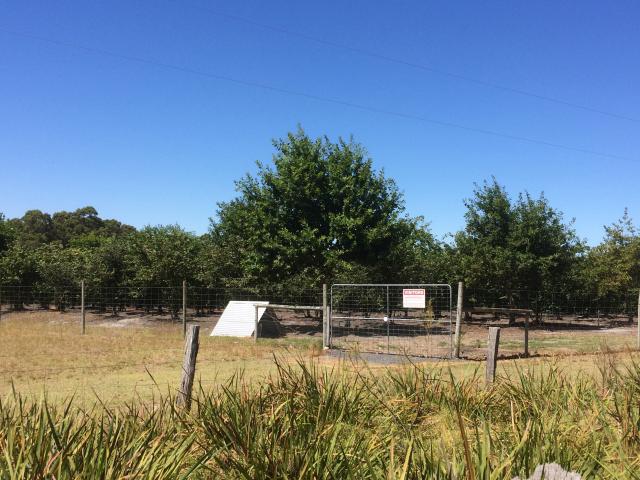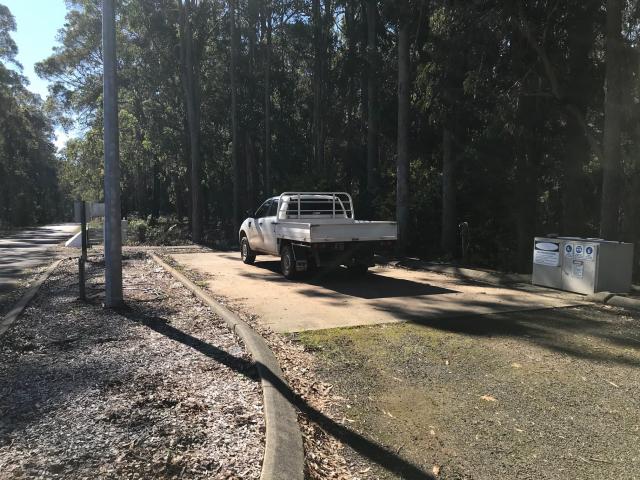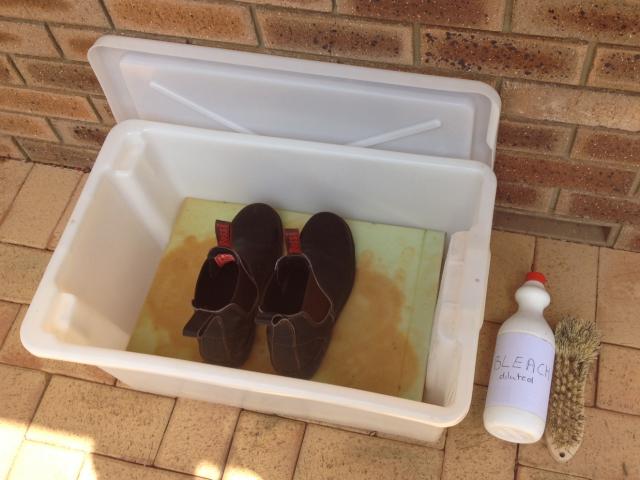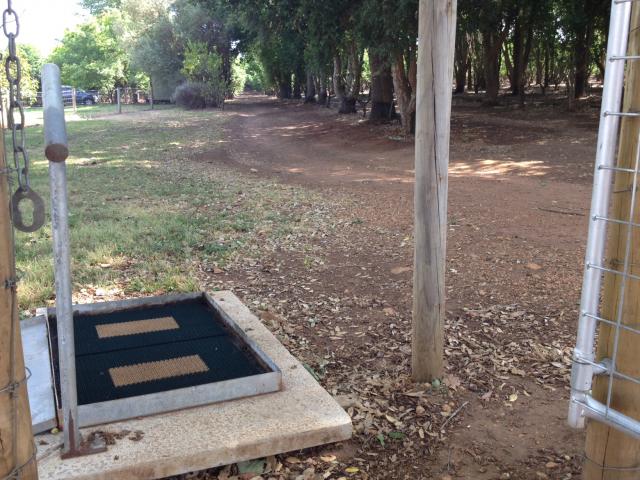National and state biosecurity
There are biosecurity measures in place at a national and state level to reduce the risk of exotic pests entering Australia and Western Australia (WA). The generic term ‘pest’ in this case includes invertebrate/insect pests, diseases and weeds. Plant Health Australia, on behalf of the truffle industry nationally, has produced a Biosecurity Plan for the Truffle Industry. It focuses on exotic pests, those not known to exist in Australia or are under active management in Australia, and have been identified to pose a threat to the industry. The plan provides information on threat identification, pest risk assessments, risk mitigation and preparedness. All growers should have a copy of this plan and be aware of the signs of these significant exotic pests.
On-farm biosecurity and hygiene
As well as working to keep out significant pest threats that do not currently occur in Australia or WA, growers should keep in mind that there are also pests already in WA. It is important to work towards keeping all of these out of your truffle orchard, or at least minimising their spread should they become established.
Good biosecurity and hygiene practices in place at the farm and orchard level will minimise the risk of new pests from both entering your orchard and spreading undetected and unrestricted within your orchard. Good internal farm practices will also assist in minimising the spread of existing pests within your truffle orchard.
Unwanted and unmanaged pests in your truffle orchard can lead to:
- reduction of product quality due to direct damage or competition
- reduction of yield due to damage or competition, including from other mycorrhizae fungi
- loss of reputation in the market due to contamination with inferior truffles.
It is impractical to stop all movement onto your property, but by developing and following a good, practical farm biosecurity plan, you can minimise the risk of pest threats entering and becoming established. The Farm Biosecurity web site has good biosecurity resources and a template for the development of farm biosecurity plans.
Implementing on-farm biosecurity
The key to good on-farm biosecurity is to reduce the introduction of foreign soil and plant material into your orchard to the lowest practicable level, and to maintain a good level of vigilance through regular monitoring and accurate record keeping. The key areas you will need to look at are:
- fencing, signage and access roads
- vehicle, machinery and equipment movements
- people management; including staff, contractors and tourists
- production practices
- animal management.
Fencing, signage and access roads
Orchards should have secure external fencing with appropriate signage and gates, that should, in most instances, be kept closed. Additional internal fences may be required if there are multiple blocks on the farm, particularly if they have differing pest status. Biosecurity signs provide an obvious reminder to all those entering the orchard of the entry restrictions and whom to contact/report to for permission to enter. A simple biosecurity sign is available for purchase, or a template downloadable for printing yourself, via the Farm Biosecurity website.

Access roads to sheds, workshops, tourism facilities and carparks should be as short as possible, ideally constructed of a hardstand material, and located as far away from the truffle orchard as practicable. Ensure any water run-off is directed away from the truffle orchard and water storage facilities that will be used within the orchard. Internal access roads to the truffle orchard should be restricted to required orchard activities only.
Vehicles, machinery and equipment
Best practice is to minimise the movement in and out of the truffle orchard. All non-essential vehicles should stay out of production areas. Around the property use designated road ways for vehicles and reduce the amount of traffic in production areas. Only drive in paddocks when necessary and particularly avoid driving in production areas in wet, muddy conditions. Driving vehicles in the truffle orchard not only provides a biosecurity risk but may also compact the soil which can affect truffle development. Restricted areas should be fenced and signed and, if necessary, gates locked. If you do have a high risk area, consider having specific equipment designated to that area.
Farm machinery including tractors, mowers, spreaders and sprayers should be washed down prior to entry into the truffle orchard if being used in other areas of lower biosecurity management. This is particularly important for vehicles and equipment that visit other properties, such as contractor’s vehicles.
Ideally, properties should have a designated wash-down bay for all vehicles, machinery and equipment. It should have high pressure water and/or air, brushes and scrapers for cleaning. Ideally a wash-down site is located between the property's main driveway and farm roads for easy access when entering and exiting the property. A sealed pad or compacted gravel area that directs run-off away from production areas and water storage resources is preferred. A waste water collection sump, with an appropriate over-flow run-off, is a good addition.

Vehicles, machinery and equipment coming from another property should preferably be cleaned initially before they leave the previous property. The cleaning at your property should be a secondary clean to remove any transportation accumulation. This way you further reduce the chances of bringing undesirable organisms onto your property.
When washing down a vehicle, wash from the top down. Take particular note of the tyres and wheel arches, grills, undercarriage, ute trays and floors. Scrapers and brushes may be required to dislodge mud. Thorough pressure washing is usually sufficient, but if a high risk situation (suspect foreign fungi or soil borne diseases), a disinfectant, or steam cleaning should also be considered. It is good practice to regularly wash on site vehicles as well.
People management
People entering the property, including staff, contractors, utility providers and tourists may bring contaminants from overseas, interstate and/or other properties. It is vital that people are informed of the need for biosecurity measures and that they comply with your procedures. Below are some procedures you could implement on your property:
- Limit the number of entry points to the property and ensure adequate signage to inform visitors of the biosecurity requirements for entering the property. Have a visitor register and checklist to ensure all relevant people are made aware of designated parking areas, wash down stations and wash down protocol, permitted areas and any off-limits areas.
- All staff should be briefed on the importance of biosecurity and of the on-farm hygiene practices in place. Staff induction should include the cleaning process of footwear and equipment on entering and exiting the property and of any internal on-farm hygiene requirements.
- A footbath should be installed at the entry to the orchard and used every time the orchard is entered. Footwear needs to be re-cleaned if moving in and out of the truffle orchard. Extra footbaths may be required for movement between different blocks of the orchard if they have different biosecurity levels.
- When using footbaths, the sanitising solution should be changed at least daily. Footwear needs to be free of all soil and organic matter before being sanitised.
- Alternatively, provide footwear that is to be worn on the farm only and not taken off site and is preferably left at the entrance to the orchard, or use disposable overshoes.
- Clothing should also be clean and dirt free, on-farm or disposable overalls are an option.
- Dogs must also be considered in any biosecurity and hygiene protocols. Ensure they are clean, their feet in particular, if they are being brought onto the orchard or moved between multiple blocks with different biosecurity levels. Slip-on booties are an option.
- Use an orchard vehicle, not external vehicle, for the transport of visitors around the property.
Disinfectants can be used in on-farm biosecurity and hygiene practices to disinfect footwear, machinery, vehicles and equipment to prevent the spread of unwanted fungi and soil-borne diseases, both from coming onto your orchard and within the orchard. For truffle orchards, chlorine based bleach is an effective option.
Sanitising footbaths may be fixed or portable. A basic portable foot bath kit is easy to put together. Each kit should contain a scrubbing brush to ensure footwear is free of dirt prior to sanitising, diluted bleach (10%) as the sanitiser and a large plastic tub with a sponge in the base. The bleach is poured over the sponge and people simply step onto the sponge to sanitise their shoes by thoroughly soaking the soles. The kit should be cleaned after each day of use.


Tourism
While tourism activities, including orchard walks and truffle hunts, play an important role in the industry and the surrounding community, they do pose a biosecurity challenge. Such activities need to be evaluated as part of the overall biosecurity plan for your truffle orchard and business, and any entrants into the orchard need to observe the farm biosecurity and hygiene protocols. Ideally limit tourism activities to a smaller restricted section of your truffle orchard.
Truffle dogs and handlers
Truffle dogs and their handlers are an integral part of any truffle orchard operation. However, as they often operate on more than one property, they do pose a biosecurity challenge. Any vehicles and equipment they are bringing onto the truffle orchard must be treated to the same protocols as any other. The dogs and their handler should be clean and follow standard on-farm biosecurity and hygiene practices.
Production practices
The management practices listed below not only help to prevent unwanted soil and plant material entering your property, they also ensure you are well placed to prevent spread within your truffle orchard and quickly identify any new pest issues:
- Ensure you know the pest status of your propagation material to the extent of current technology. Keep a record of all planting material. Refer to DPIRD article ‘Sourcing inoculated trees for truffle production in Western Australia’ for more details on sourcing quality planting stock.
- Remove weeds and volunteer plants that could act as alternate hosts and harbour unwanted mycorrhiza or pest problems.
- Minimise water runoff and soil water erosion that can carry soil around the site – both into the truffle orchard and from block to block within the orchard.
- Conduct regular surveillance of the truffle orchard and associated yards, including around your wash down bay, sump and water collection run-off areas, to pick up trouble spots and potential pest incursions.
- Record any pest issues found within and nearby the orchard and report anything unknown – MyPestGuide Reporter provides a quick and efficient method of reporting pest issues.
- Ensure your staff are well aware of what key pest threats look like.
- Disinfect equipment, particularly pruning equipment, at regular intervals to minimise the potential for spread.
Animal management
Animals, either livestock or wildlife, can introduce contaminant fungi, including other mycorrhizae, and pests into a truffle orchard and/or spread them within an orchard, therefore:
- Regularly check and maintain fences. The standard of fencing will largely be dependent on the expected level of pressure from animals, namely; kangaroos, pigs and rabbits.
- Take steps to prevent livestock movement into the truffle orchard.
- If necessary, implement a feral animal control program. You may need to work with neighbours to co-ordinate feral animal control. Consult your local shire and the Department of Biodiversity, Conservation and Attractions for any regulations or permits that might be required.


